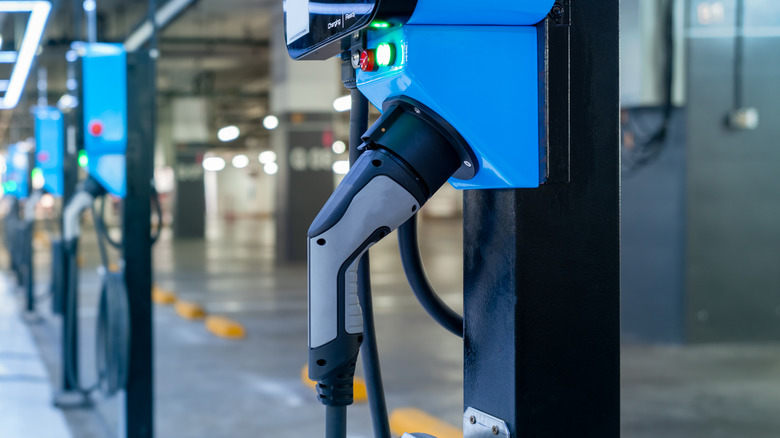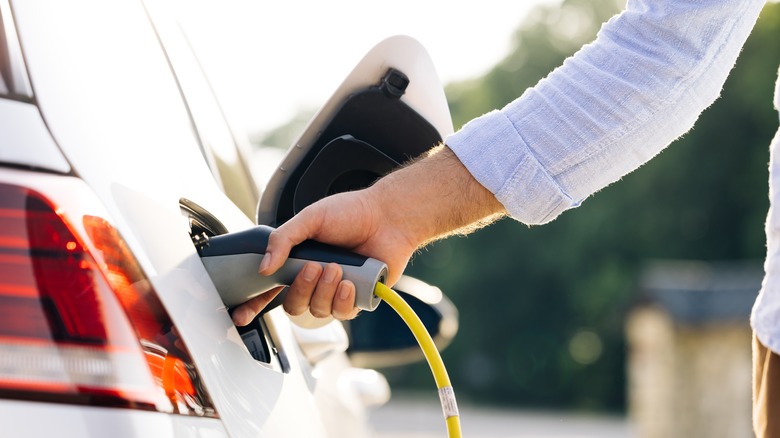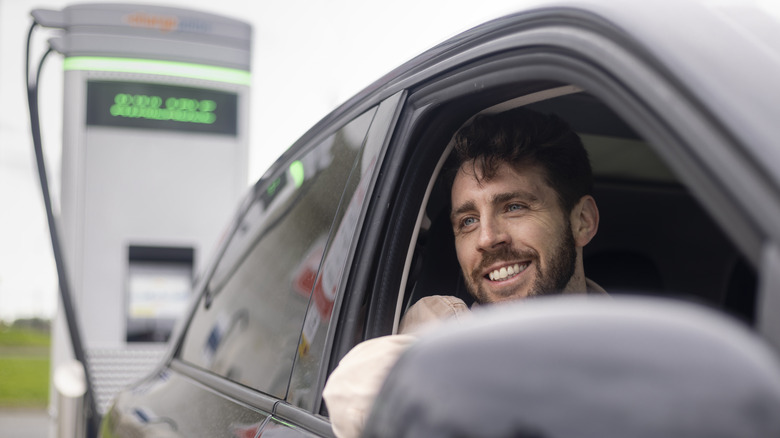Could Electric Cars Cause Power Blackouts In The US?
With electric cars growing in popularity year after year, many people are now seeing the benefits they have to offer — including a tax break. While you'll be able to save money on your vehicle by no longer having to get gas, it could be creating a new issue entirely. Since these cars must be plugged in, you'll almost certainly see an increase in your monthly electric bill. That will not only impact you individually but also create some long-term problems for the United States.
With a projected 50 percent of cars sold in the U.S. by 2030 being electric vehicles, there will be a lot of stress on the power grid. We're already seeing issues with a stressed grid arise in Texas and California. Electric cars don't do much to help that in the future. According to an analysis from the Rapid Energy Policy Evaluation and Analysis Toolkit, domestic electricity demand is expected to increase by 38 percent by 2035. As electric cars continue to become the norm, these problems will increase tenfold, and it could eventually lead to power blackouts.
Blackouts can be avoided
As the need to charge more EVs increases, it will lead to more strain on the electric grid. We're seeing the grid having problems without electric vehicles making up a significant market share, so the problems will increase unless updates are made. California is expected to have spent $50 billion on grid upgrades by 2035 to help meet the need for growing demands.
Jeff Allen, executive director of EV advocacy group Forth, believes the electric grid is up to the task.
"The simple answer is yes," Allen told U.S. News & World Report. "I think what the California situation highlighted is that we do need to invest in the electrical grid."
In September 2022, California asked EV owners not to charge their vehicles due to the ongoing heatwave. Despite that setback, the state assures drivers they can handle the increase in electric cars.
Electric car ownership is growing rapidly
The International Energy Agency estimates there are 16 million consumer electric cars worldwide that use roughly 30 terawatt-hours of electricity annually. This is the equivalent of all the electricity generated in Ireland. The expected number of EVs on the road by 2030 is 26.4 million in the United States alone, an increase from the 18.4 million predicted in 2018. What this shows is the demand for these cars is growing. The grid does seem capable of handling the increase, but it will require a much-updated infrastructure. It's expected that 140,000 fast-charging ports will be needed to support the growing population of EVs within the country, according to the Edison Electric Institute. Hence, the existing power grids have their work cut out for them.
Much work is being done to ensure the right amount of preparation is made for the continued growth of EVs, but it's clear there have been some bumps in the road so far. A three-year initiative launched in August 2023 by the Electric Power Research Institute is meant to show precisely where cars will charge on the grid. A smoother transition is possible by identifying where the energy spikes are coming from.


